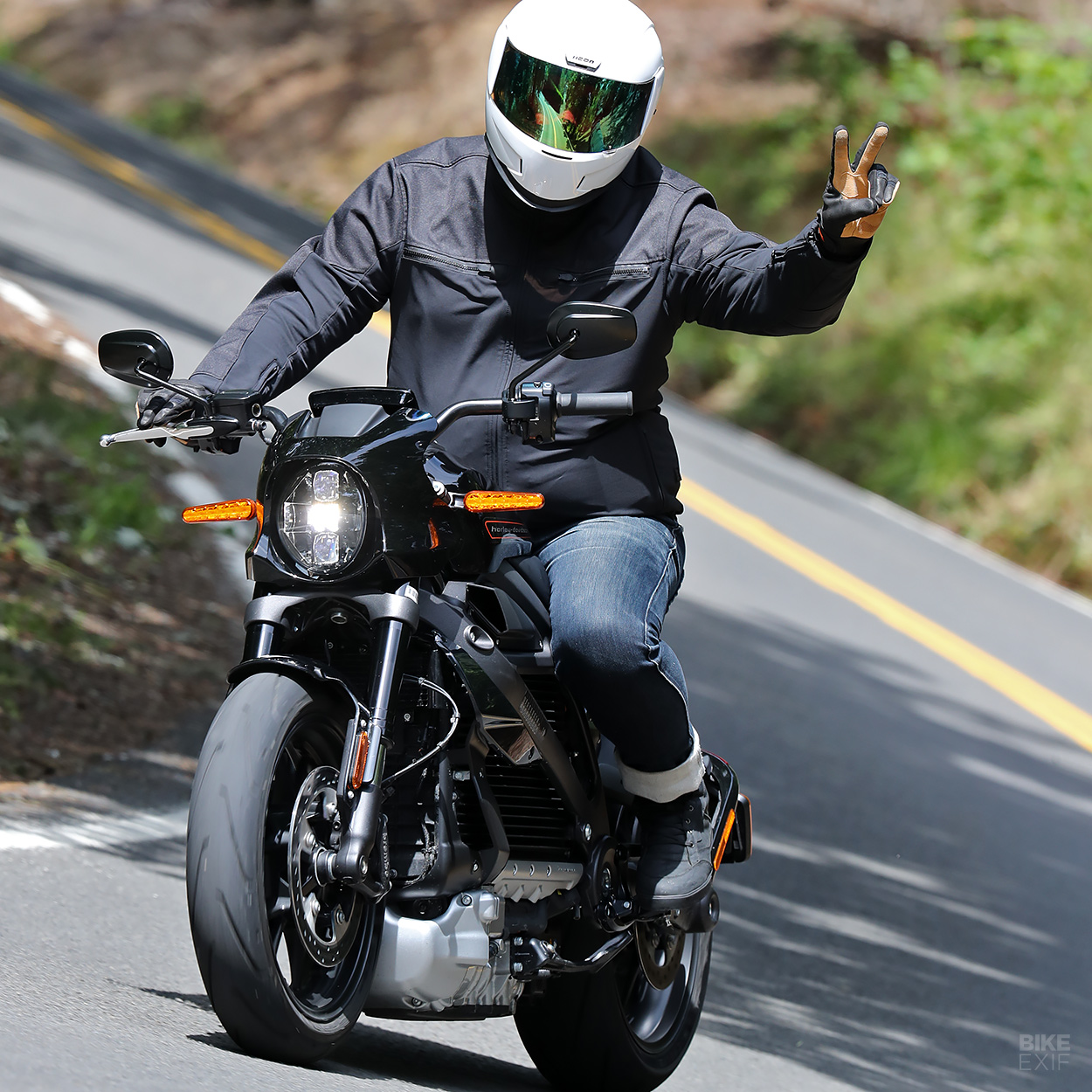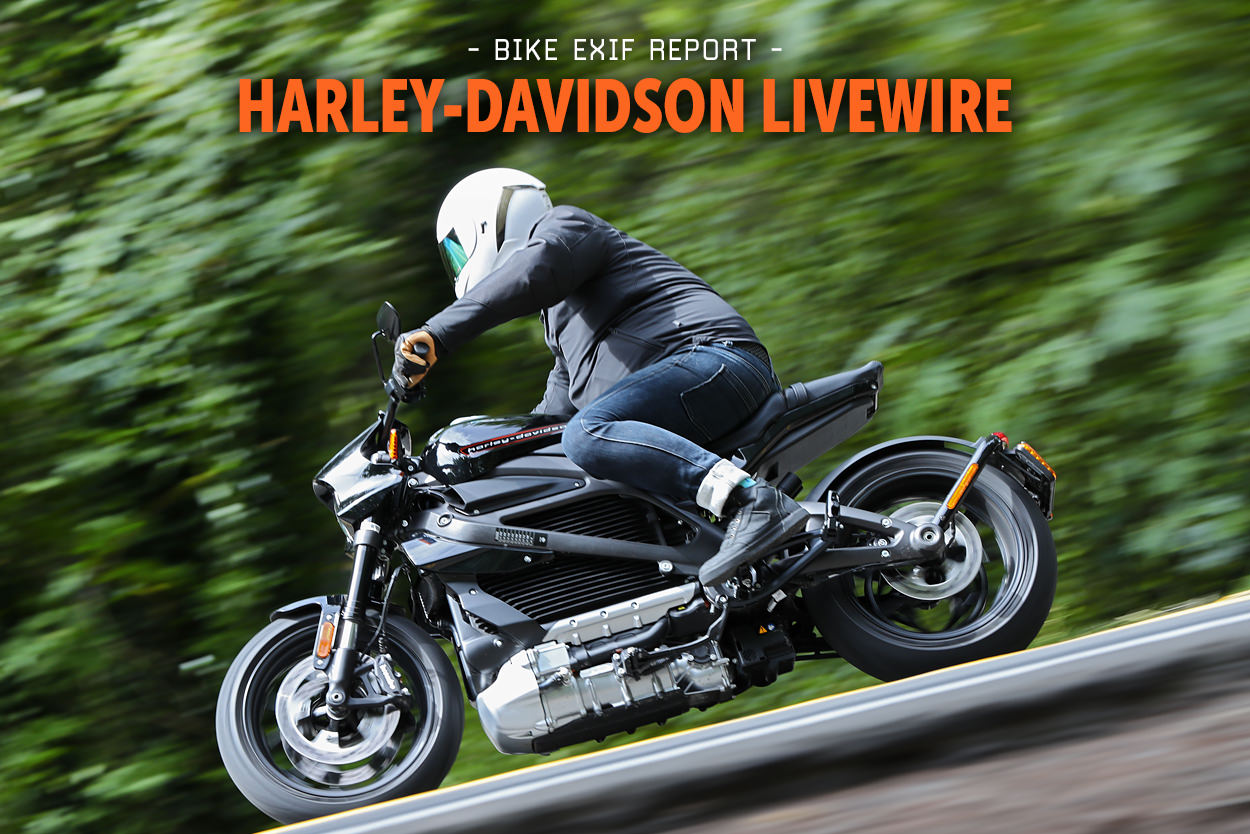
Right now, it’s hard to judge Harley-Davidson’s tactics without framing them against the stiff challenges the company is facing. If it’s not tariff wars, it’s the reality of an aging demographic. And then there’s same struggle every other manufacturer has in the USA: reaching new riders.
But in the midst of this, the Motor Company has just delivered on one of its biggest and boldest promises: launching an electric motorcycle. And the LiveWire means that Harley-Davidson is the first major OEM to release a battery-powered sports bike.
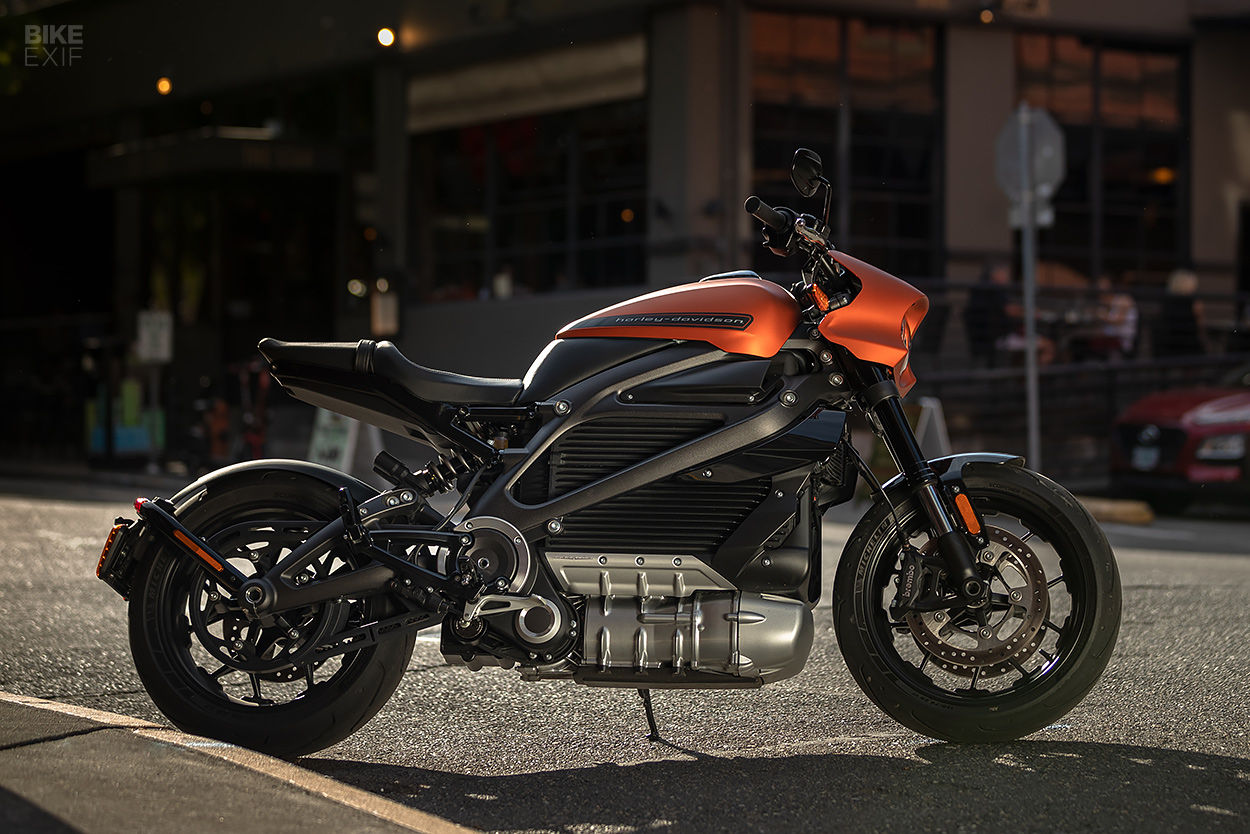
The new Harley-Davidson electric is unlike anything else on the market. On one hand, it’s an electric vehicle from a company that built its heritage on petrol-powered V-twins. On the other, it’s a focused and fast naked from a company that normally builds cruisers.
It seems like an eccentric move, but it’s calculated. Harley say they want to ‘build riders’ rather than ‘build motorcycles’—and the company execs see electric motorcycles as an avenue to reach new customers. And let’s not forget the rumors of some countries planning to ban petrol-powered vehicles. Any company not looking into electric power is going to be caught napping.
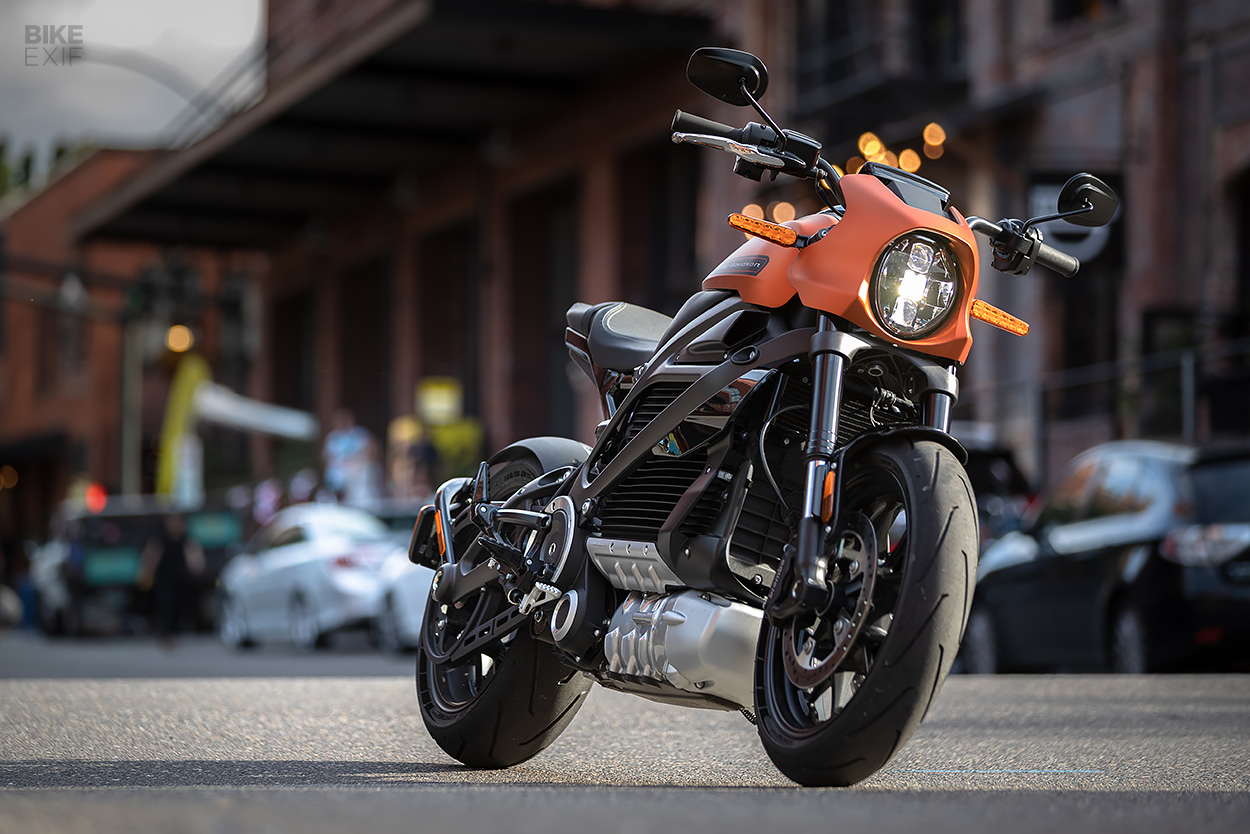
Harley is not betting the whole farm on the LiveWire though. It’s a halo product: the top end of a entire range of electric vehicles to be released over the next few years. (We’ve already caught a glimpse of some of the smaller concepts they’re toying with.)
So is the first Harley-Davidson electric motorcycle a hit or a miss? I traveled to the famously weird city of Portland, Oregon to find out.
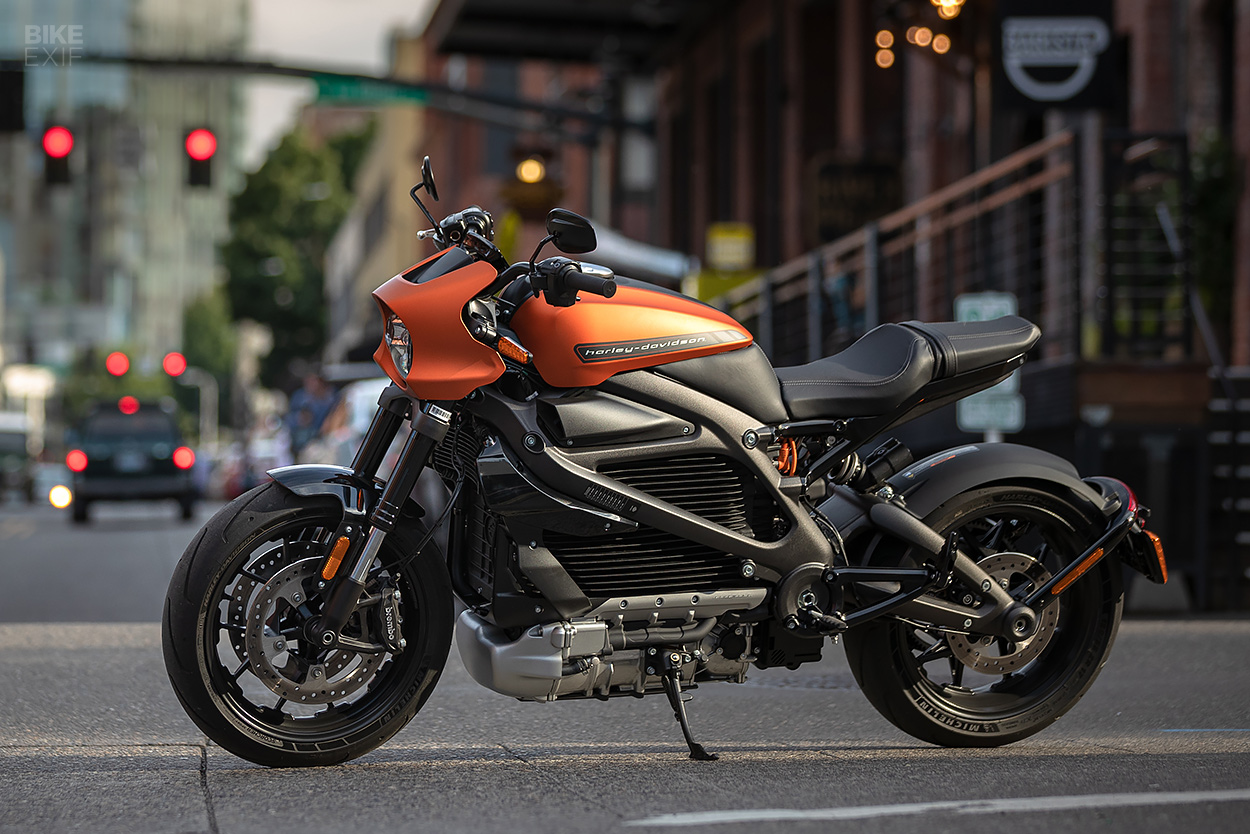
Available in orange, yellow or black, the LiveWire is a striking machine in the flesh, and visually unlike anything else from the Bar and Shield. Other than a few subtle hints of the XR750 in the tank and tail lines, there’s really not much in the styling that ties it to the Street Glides that sell by the truckload in Middle America.
From the wraparound aluminum frame, to the mono-shock swing arm and aggressive stance, it’s the sort of sporty standard that many people have been waiting a really long time for Harley-Davidson to build.
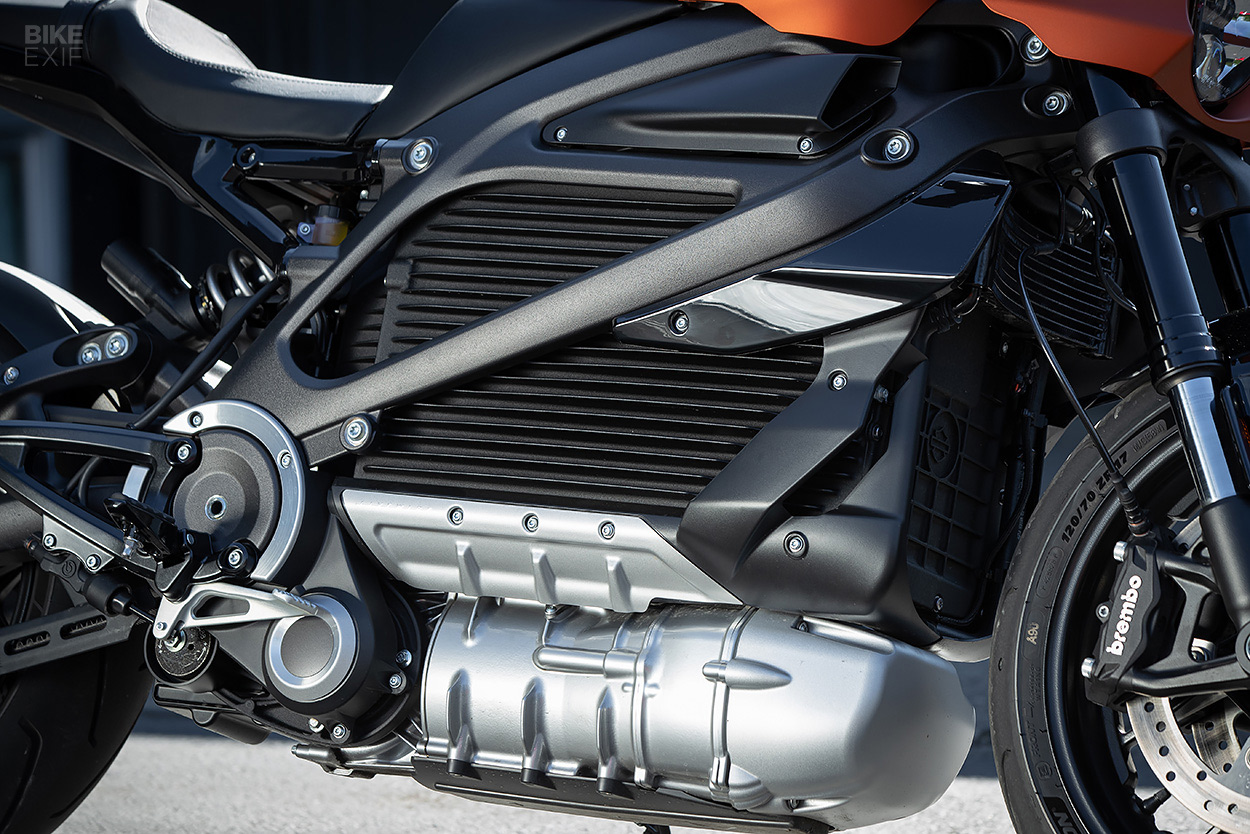
Even though there’s no chunky V-twin here, the LiveWire’s designers still wanted to make the motor a focal point of the design. They’ve named it ‘Revelation,’ and finished it in silver to distinguish it from the rest of the components.
It makes 105 horsepower, and 116 Nm of torque, everywhere in the rev range. H-D claims it does the sprint to 60 mph in three seconds, 60-80 mph in 1.9 seconds, and has a top speed of 110 mph. The primary drive uses a spiral bevel gear, with a belt sending power to the back wheel.
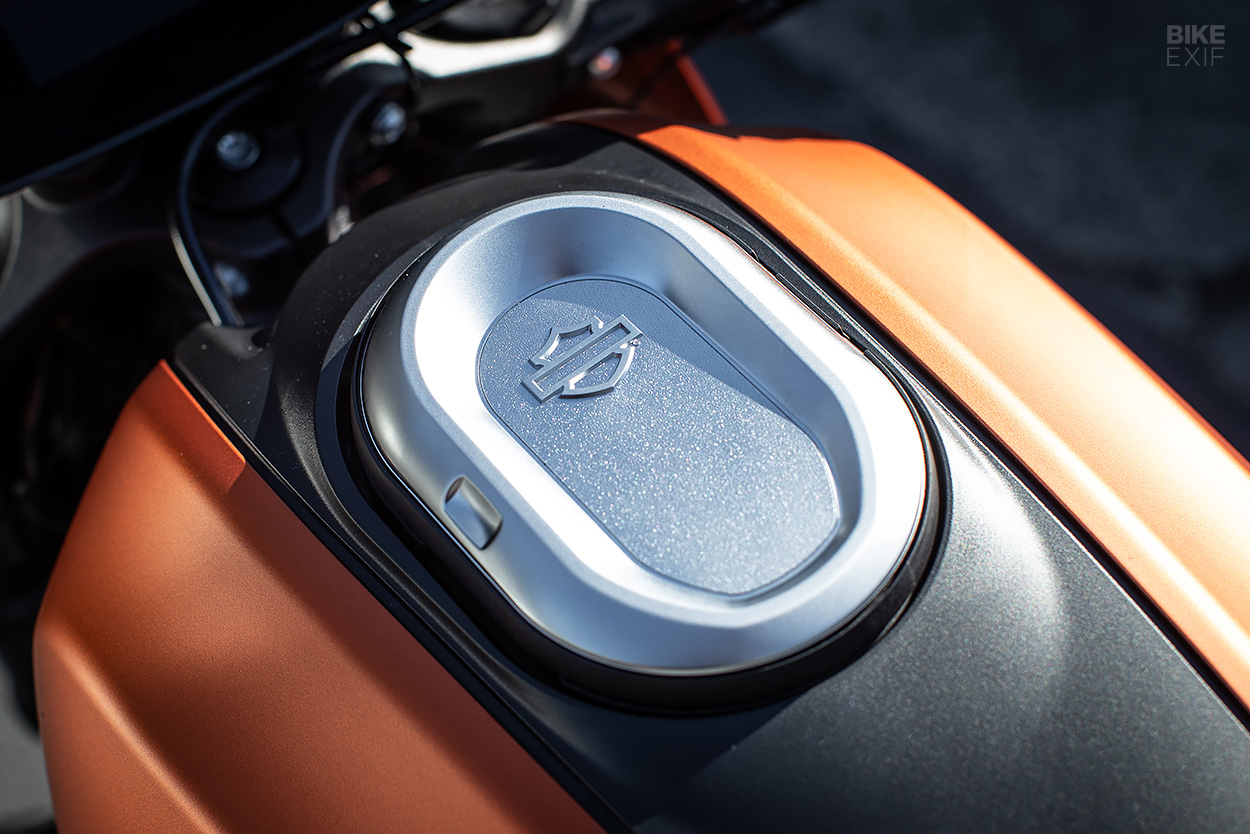
Juice comes from a 15.5 kWh Lithium-ion battery with a five year unlimited mileage warranty. Range is quoted at 146 miles (235 km) in the city, or 95 miles (152 km) of combined stop-and-go and highway riding.
Hiding under the LiveWire’s faux gas cap are two charge ports: one for a regular Level 1 wall charger, and one for DC fast charging. The regular wall charger cable is tucked away under the seat, and gives you a full charge in 12.5 hours, but DC Level 3 charging will top up the battery in one hour flat.
All Harley dealerships selling the LiveWire will have DC chargers available. And in the US, Harley has partnered with the charging company Electrify America to install another 800 DC stations, with a total of 3,500 individual DC chargers in nearly 30 metro areas.
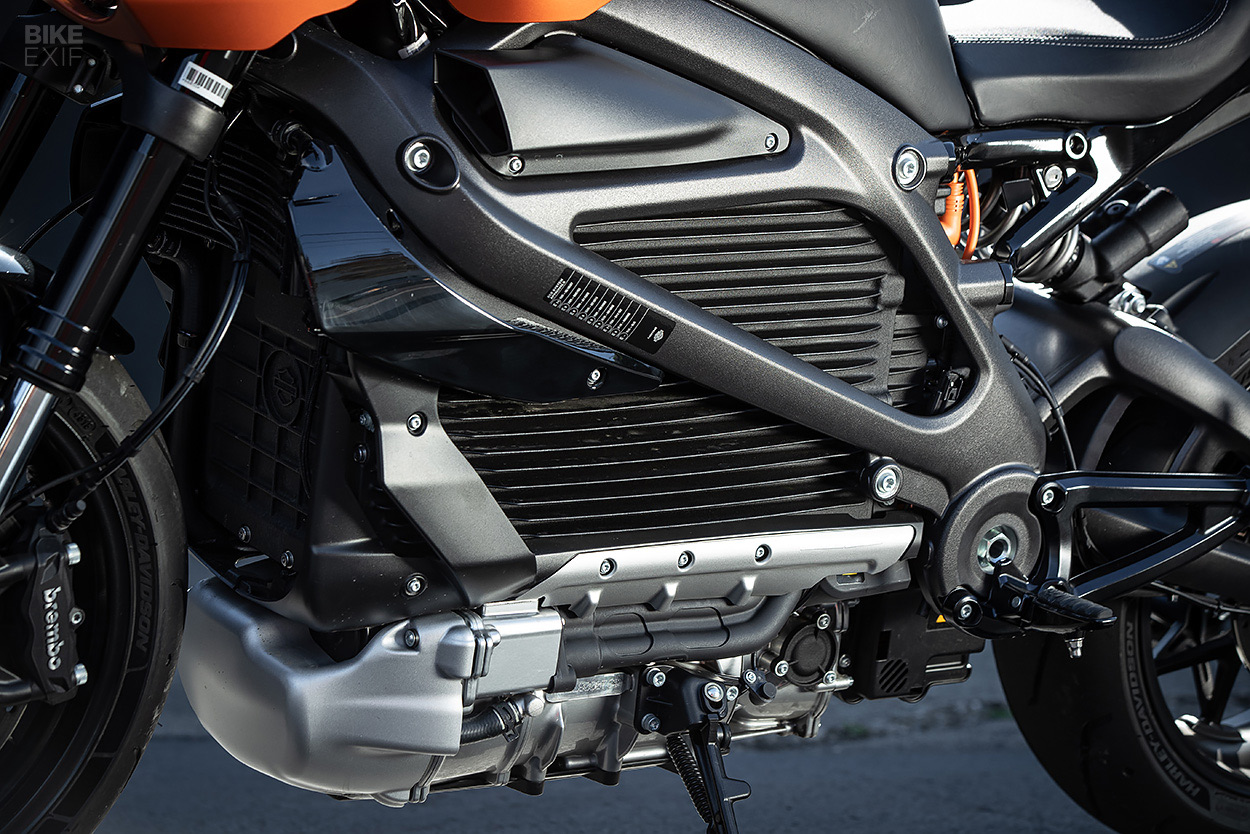
This setup carries a hefty weight penalty though. The LiveWire sits at 549 pounds (249 kg), and one of Harley’s engineers told me that roughly seventy percent of that is the battery and motor. For the rest, H-D has used surprisingly light parts—like a modular cast aluminum frame that wraps around the battery, using it as a stressed member.
The frame’s actually constructed of multiple pieces, with a separate steering head, and left and right sections. That modular design is everywhere on the LiveWire; the subframe’s easily removable too, and all the electrical components are very neatly tucked under the ‘tank.’ So customization should be a cinch—as should adapting the LiveWire platform for different applications.
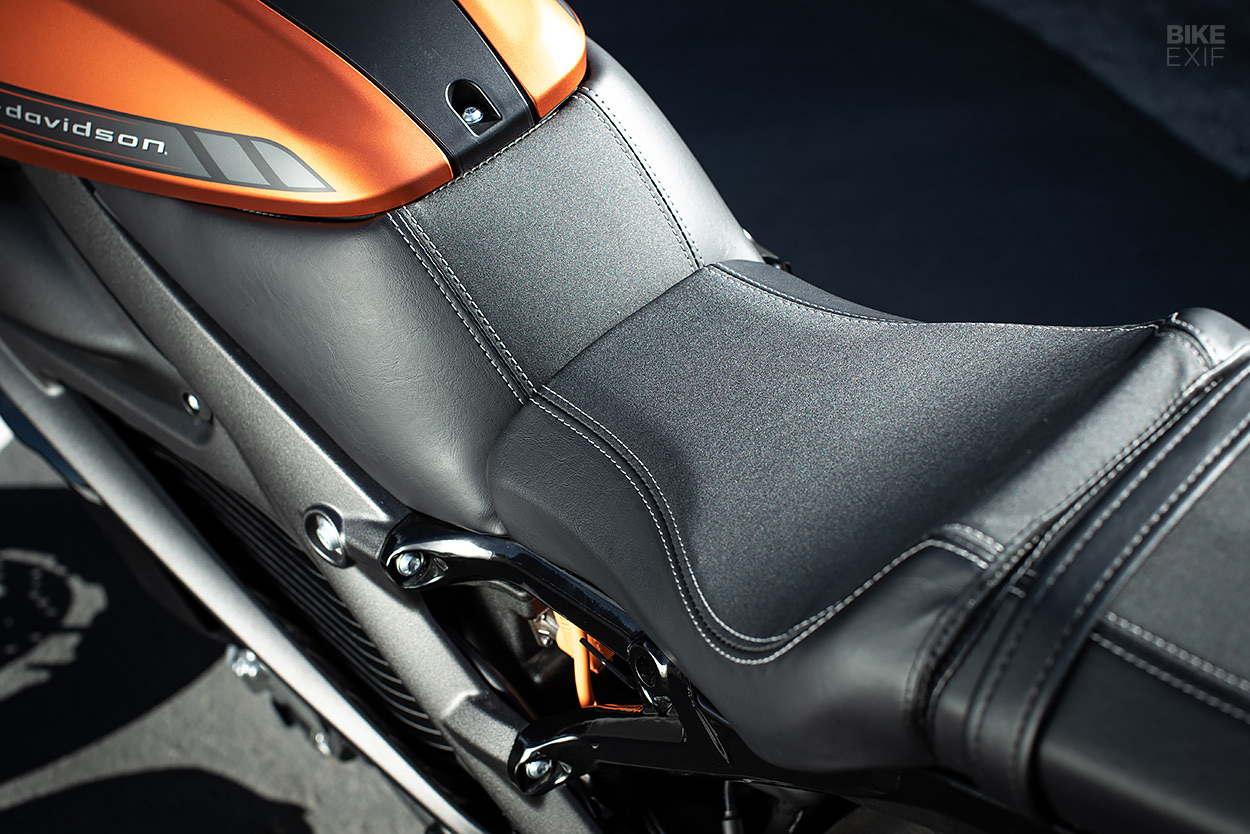
Fit and finish are impressive too. There’s not a single messy weld in sight, or a single part that looks out of place. The bodywork is all plastic, but it doesn’t look or feel dinky. All the lights are LED, and there’s hardly any visible cabling or plumbing.
There are a few bits to nitpick though. While the seat is nicely shaped, the upholstery between the rider and passenger pads (and the grab strap), is misaligned and wobbly. And even though the upholstered section just behind the ‘tank’ serves an ergonomic purpose, it reminds me too much of the leather tank covers you see on cruisers.

Up in the cockpit, all the wiring runs inside the handlebars—so the spindly wires running into the turn signals stick out like sore thumbs. The LiveWire uses the exact same switchgear design as the rest of Harley’s range, which is OK, since it works well and feels solid. But it also uses the same mirrors and grips as every other Harley, including the ubiquitous Sportster—and I’m not sure I’m cool with that.
Minor gripes aside, the LiveWire is an attractive motorcycle, electric or not. And it’s running some serious hardware too. There’s fully adjustable Showa suspension at both ends, and Brembo brakes with twin 300 mm discs up front. The tires are 17” Michelin Scorchers—120 mm wide up front, and 180 mm out back.
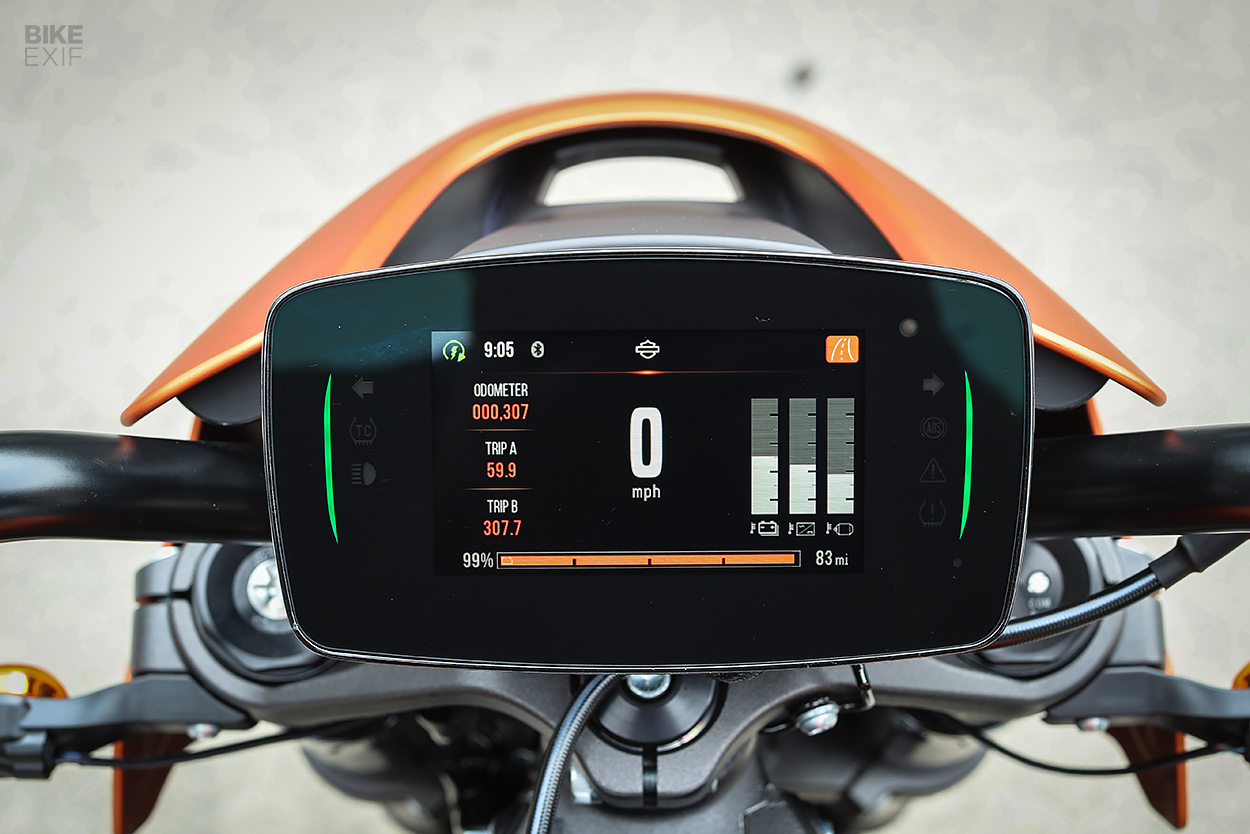
H-D has also packed a substantial amount of functionality into the LiveWire’s TFT display. Speed and battery charge take center stage, but ‘widgets’ on either side let you flick through everything from distance and running temperatures, to how much battery power’s being used under acceleration and deceleration.
It’s a touch screen unit, which is useful for diving into the menus and changing settings without having to fiddle with buttons. It’s a small unit though, and even though it’s really clear in varying light conditions, the widget areas feel cramped.

The LiveWire also integrates with your smartphone via a proprietary app. The app gives you the bike’s vitals, shows you where the nearest charging station is, and even sends you a push notification when someone tries to tamper with it. You can also call up navigation via your phone, with turn-by-turn instructions popping up on the display. And you can flick through music, by adding a Bluetooth helmet system into the mix.
Unfortunately the bikes we rode at the launch were pre-production units, which meant a lot of that functionality was missing. (It also meant that I had an occasional gremlin when starting my bike.)
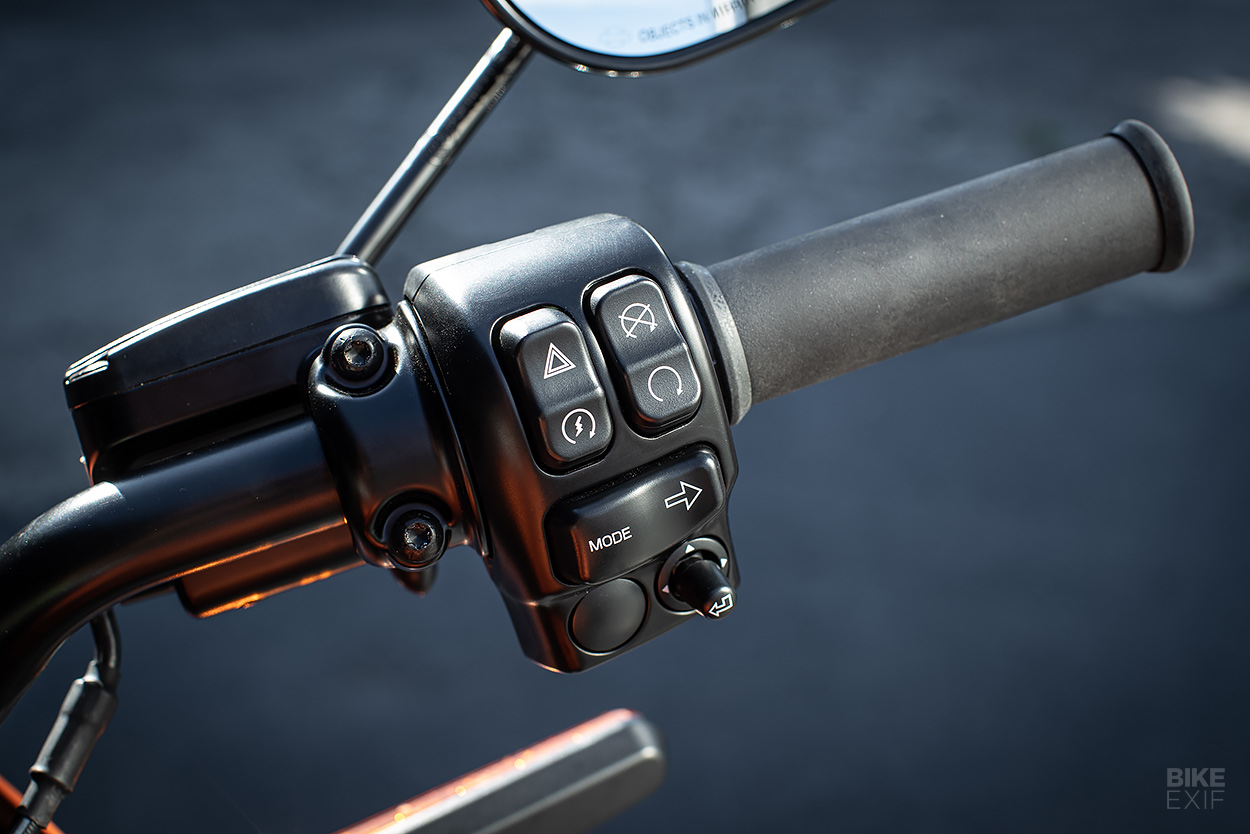
The LiveWire’s start sequence is bizarrely uneventful. You flick the kill switch and make sure the side stand is up, then hold down the start button until a pair of yellow LED strips on either side of the dash turn green. The drive system is now active and ready to go, without as much as a burp.
H-D have built a haptic feedback feature into the motor, which basically just generates a intermittent throb to let you know the bike is ‘on.’ It’s a great idea, but the effect is far too vague, and actually sort of off-putting. With a little refinement, it could actually be a really neat feature, but I just couldn’t gel with it.
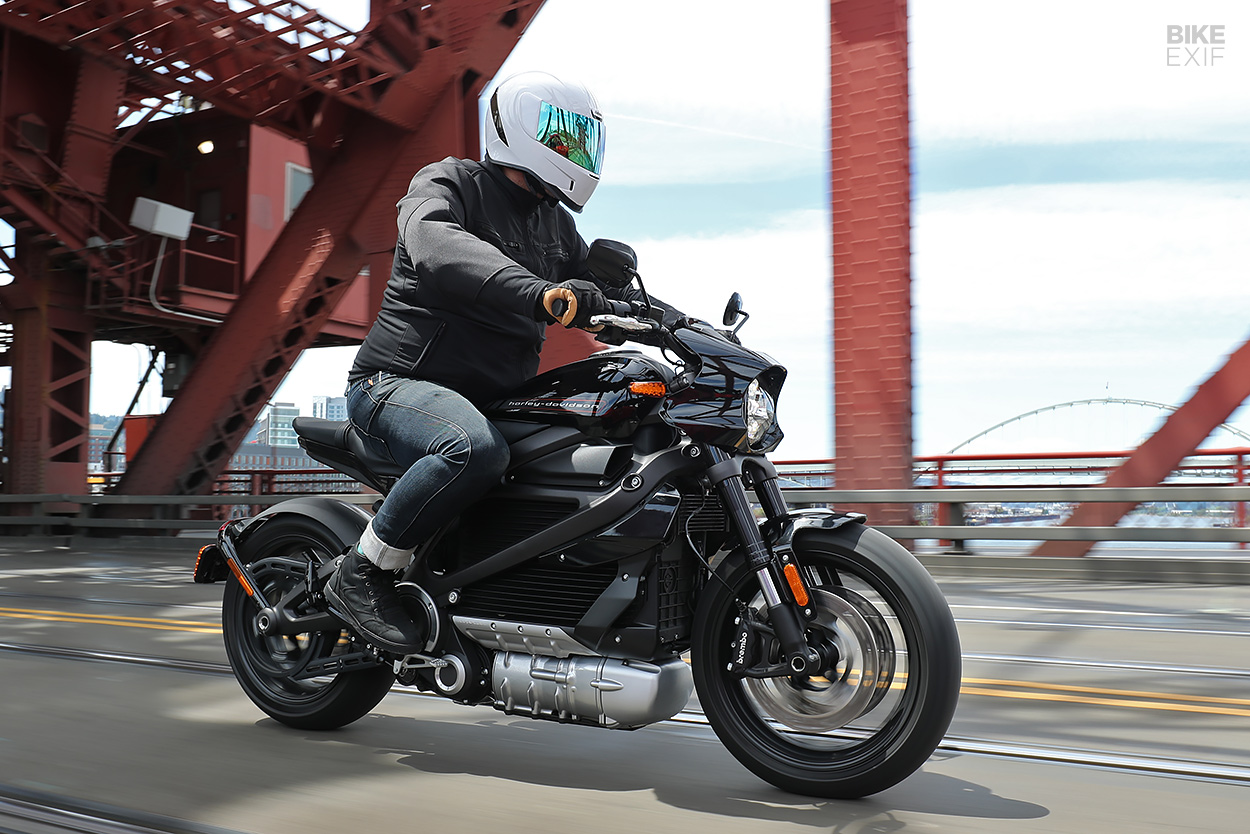
Pulling away is pretty trippy too. With no clutch or gears to engage, rolling on the throttle is all it takes to get moving. It took me a little while to acclimatize to the throttle’s pickup, but ultimately it’s a very smooth system, and if you whack it wide open, the surge of power really is quite thrilling.
H-D has clearly spent time getting the LiveWire’s engine mapping right. There’s a regenerative braking system too (which effectively regenerates energy as you close the throttle), and it feels a lot like normal engine braking.
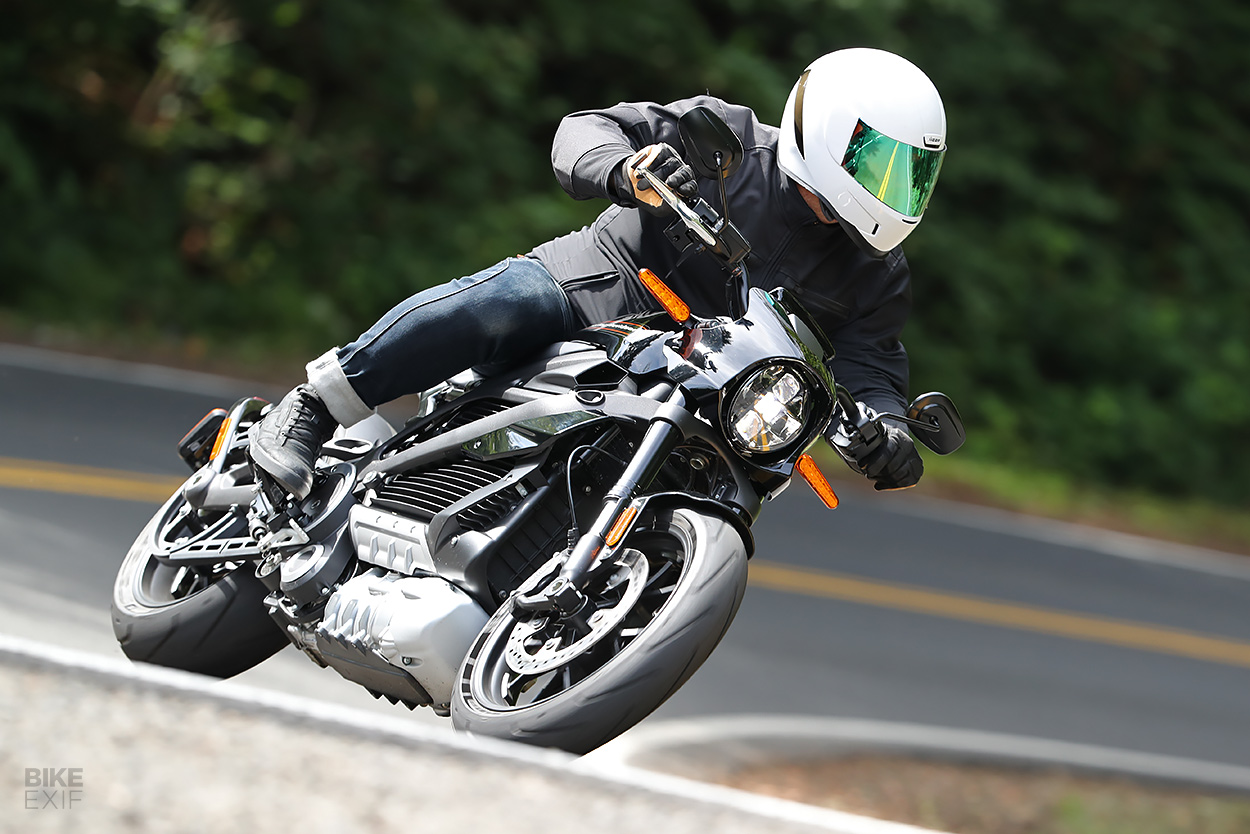
There’s also a full complement of rider aids, including cornering ABS, rear-lift mitigation to keep the rear wheel planted during heavy braking, traction control, and an anti-slip system to prevent rear wheel lock under regenerative braking.
The Harley-Davidson electric has seven rider modes on board: four presets, and three that are customizable. Each determines the level available power, plus regenerative braking, throttle response and traction control. And there’s a separate switch to disable traction control altogether.
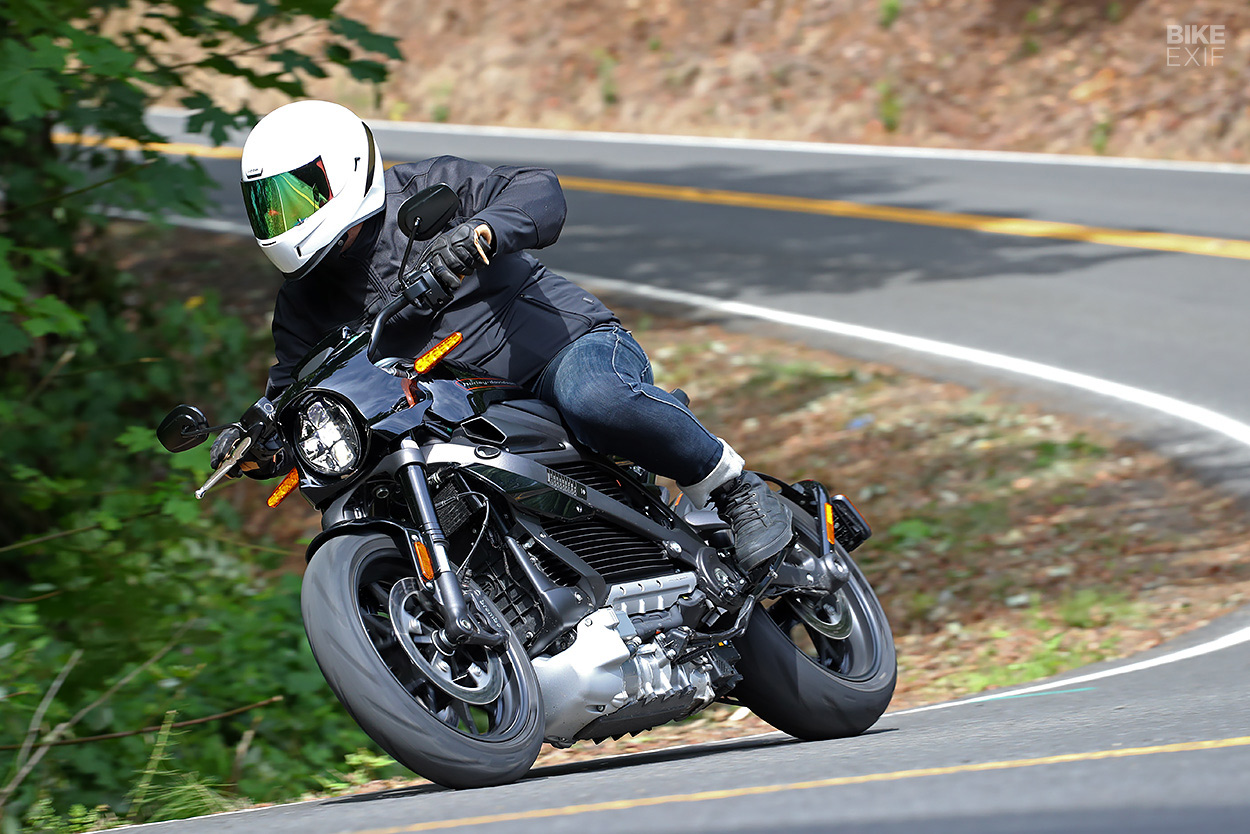
The preset modes are pretty self-explanatory: Sport, Road, Rain and Range. ‘Road’ mode is probably the best, offering smooth performance for day-to-day riding. ‘Sport’ mode opens the LiveWire up for more enthusiastic riding—but that also means the throttle is a little snatchier, and the ‘engine braking’ a little harder.
Our riding route took us from within Portland’s city limits, into the rolling forest-lined hills of the Pacific Northwest. Harley has pegged the LiveWire as a city bike, but it’s one hella good canyon-carver too.
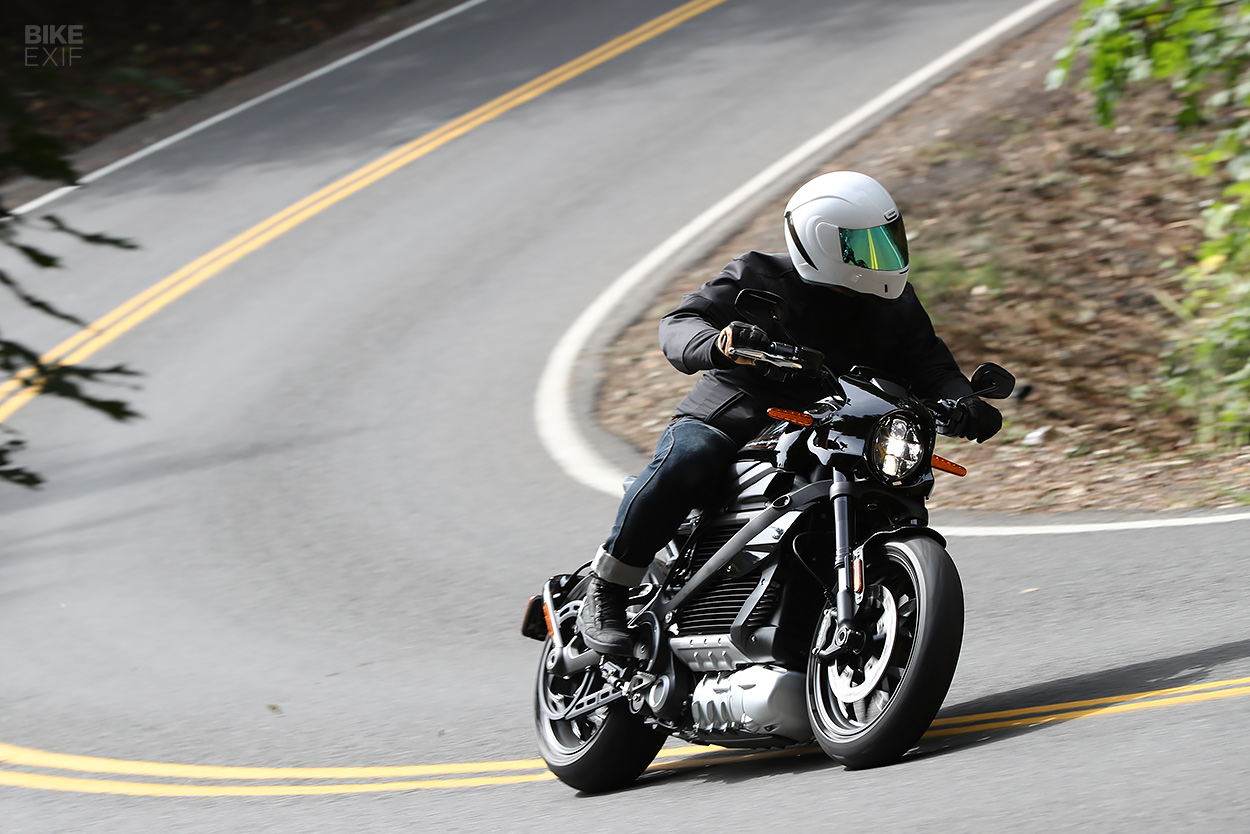
For starters, the ergonomics are damn near perfect. From the upswept bars, to the rear-set pegs and comfy seat, it’s the setup that bikes like the H-D Street Rod and Roadster should have come out with. You’re upright enough for good visibility in the city, tucked enough for quicker rides, and there’s ample leverage to push in and out of corners.
The PNW offered up some sweet corner sequences, and hustling the LiveWire through them was buckets of fun. That’s partly because it handles so well, and because those Showas do a good job of holding a line, while also soaking up unexpectedly bumpy sections of road.
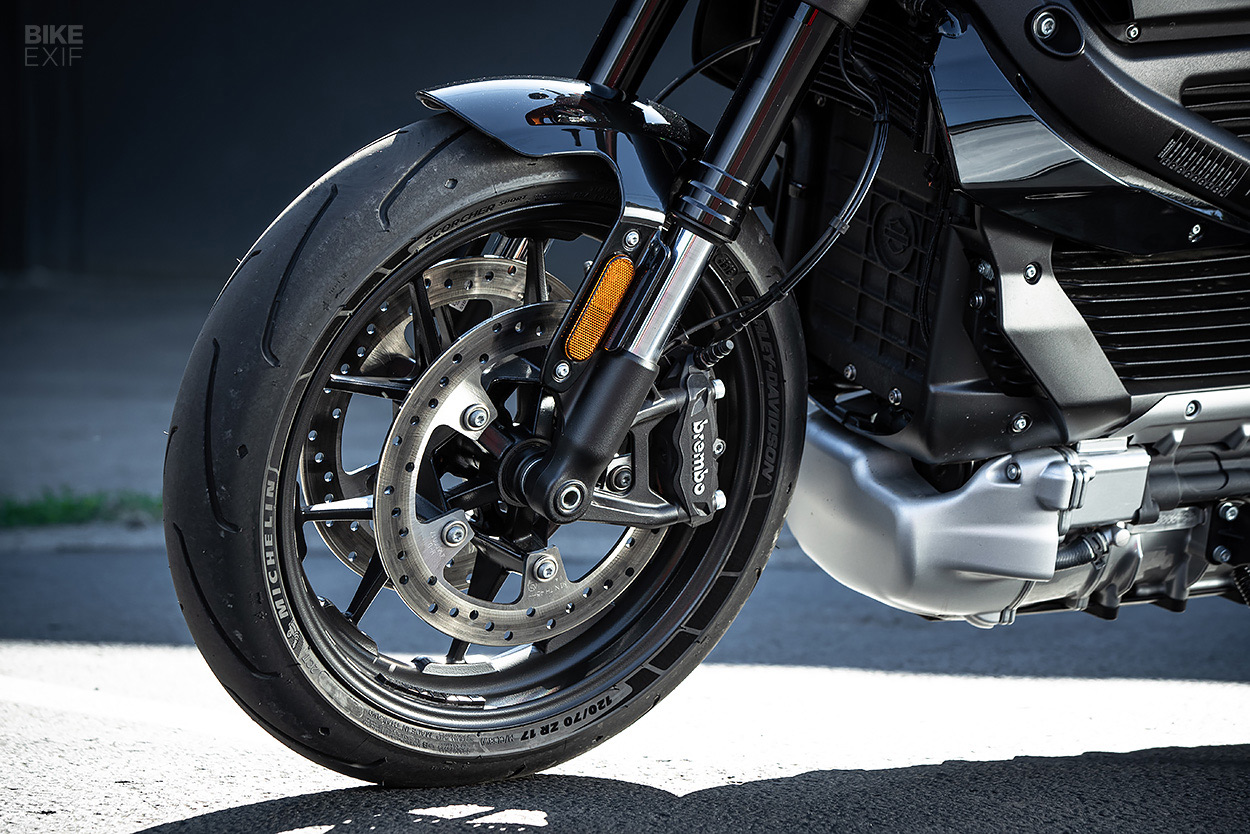
But it’s also because there’s no clutch or transmission to fuss with, and no need to keep it at the right RPM. With excellent modulation from those Brembos, I found myself braking deep into corners, pitching the LiveWire over, and then seamlessly rolling on the throttle to launch it out the other side. Within minutes, utilizing the smooth characteristics of the electric drivetrain had become second nature.
You’re shifting a lot of weight around though, so I’d call the LiveWire surefooted rather than nimble. And with the slightly more aggressive throttle response (and regenerative braking) in Sport mode, pushing it hard did tire me out after a while.
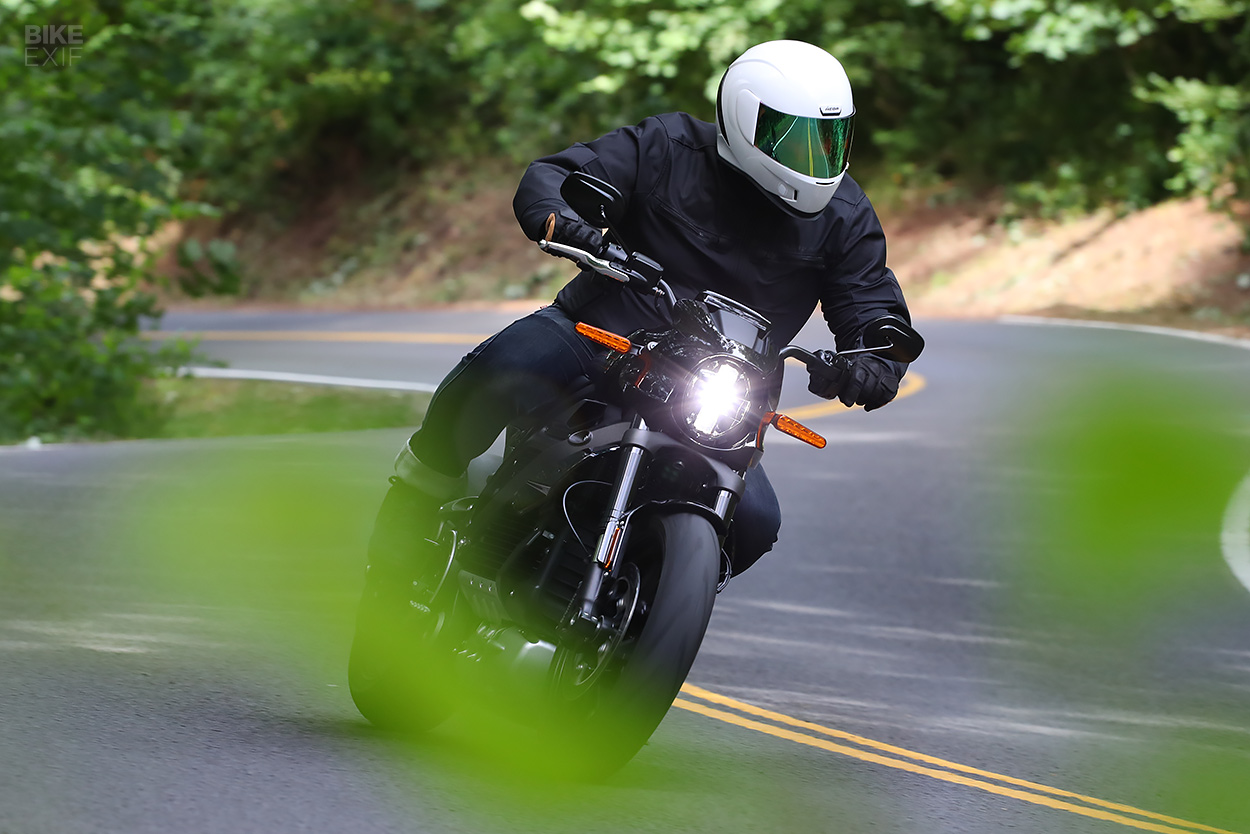
There wasn’t much open road to test any top speed claims, but I did manage a ton at least once (anything north of 100 was a strain). And the eerie whir from the motor while pinning it between forests instantly ticked my Star Wars Land Speeder boxes.
We got stuck in traffic the second we headed back into town, but again, the lack of a clutch or gearbox made crawling from light to light less painful. And unlike the combustion Harleys that were riding with us, there was no niggling heat build up from an exhaust or motor. I did notice the LiveWire’s weight again in really slow maneuvers, but at rolling pace it was less of an issue.
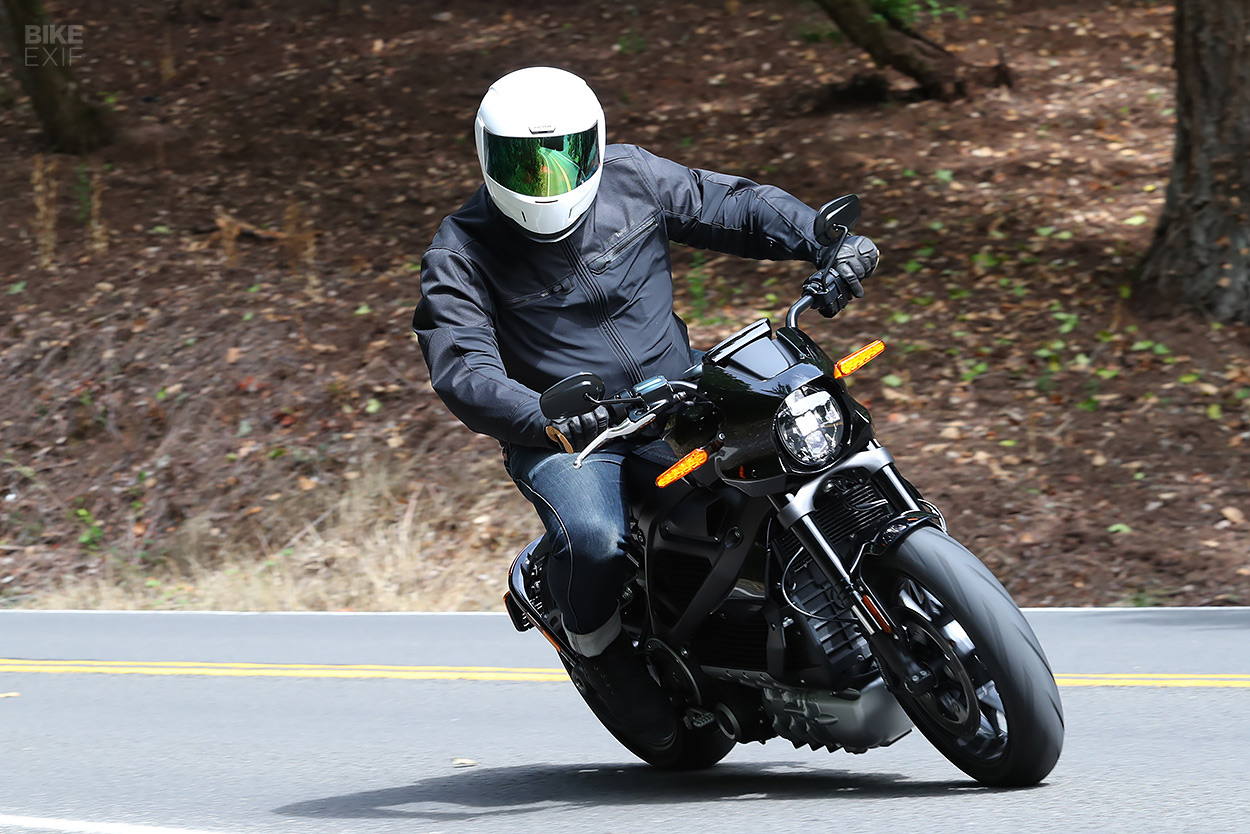
I left South Africa hoping deeply that the Harley-Davidson electric wouldn’t suck—and it truly exceeded my expectations. It’s not only a solid electric motorcycle, but also a sport naked with whip-cracking acceleration and respectable handling.
The only thing holding the LiveWire back could be its price. At $ 29,799 it’s not cheap, and the Zero SR/F in full spec trim offers more performance and range, for around $9,000 less.

But then again, none of the specialist electric motorcycle brands have the dealer network that Harley-Davidson does. The LiveWire’s set to hit 250 North American and European showrooms in September, each with a DC fast charging station and two years of free charges.
I’m not sure how I feel about the range either, but ultimately my opinion of the price and range matters a lot less than individual use case scenarios. Those numbers may be bitter pills to swallow for some riders, but for others, the chance to own a premium electric motorcycle from a major manufacturer just might outweigh the drawbacks. And whether range and charging are issues or not, depends entirely on your lifestyle.

There’s a perception that LiveWire sales will make or break Harley-Davidson’s future, but I don’t think that’s true at all. Halo products exist to juice up a brand, push their engineering departments to their limits and shatter perceptions.
The LiveWire has done just that, and has me excited for whatever Milwaukee has in the pipeline next.
Harley-Davidson | Facebook | Instagram | Images by H-D and Alessio Barbanti
